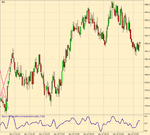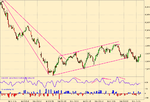I'm trying to get a grip on the significance of price/volume and I need help and advice.
Please look at the attached Word file containing a snapshot Depth of Market of the DAX future (if it isn't visible scroll up or down).
What would be an initial assessment from the information presented?
Which are the most significant elements?
Is it bullish or bearish?
If I was looking to buy, does the information suggest predominantly upward (buying) pressure?
Or, if I was looking to sell, does the information suggest predominantly downward (selling) pressure?
Any suggestions greatly appreciated.
Grant.
Please look at the attached Word file containing a snapshot Depth of Market of the DAX future (if it isn't visible scroll up or down).
What would be an initial assessment from the information presented?
Which are the most significant elements?
Is it bullish or bearish?
If I was looking to buy, does the information suggest predominantly upward (buying) pressure?
Or, if I was looking to sell, does the information suggest predominantly downward (selling) pressure?
Any suggestions greatly appreciated.
Grant.


